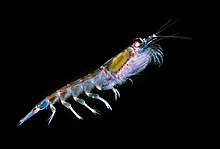
Back Biomassa Afrikaans كتلة حيوية Arabic Biomasa AST Biokütlə Azerbaijani Біямаса Byelorussian Біямаса BE-X-OLD Биомаса Bulgarian Biomassa BJN জৈবিকভর Bengali/Bangla Biomasa BS



Biomass is a basic term in ecology, and in the energy production industry. Organic waste such as dead plant and animal material, animal dung and kitchen waste can be converted into gaseous fuel called biogas. The organic waste is decomposed by bacteria in biogas digesters to emit biogas which is essentially a mixture of methane and carbon dioxide.
In ecology, biomass means the accumulation of living matter. It is the total living material in a given area or a biological community or group. Biomass is measured by weight, or by dry weight, per given area (per square metre or square kilometer). In the energy industry, it refers to biological material which can be used as fuel or for industrial production. Biomass includes plant matter grown for use as biofuel, and also includes plant or animal matter used for production of fibres, chemicals or heat. Biomass may also include biodegradable wastes which can be burnt as fuel. It excludes organic material which has been transformed by geological processes into substances such as coal or petroleum. It is usually measured by dry weight.
- ↑ Nicol S. & Endo Y. 1997 (1997). Fisheries Technical Paper 367: Krill Fisheries of the World. FAO. Archived from the original on 2006-05-14. Retrieved 2021-12-28.
{{cite book}}: CS1 maint: numeric names: authors list (link)
© MMXXIII Rich X Search. We shall prevail. All rights reserved. Rich X Search